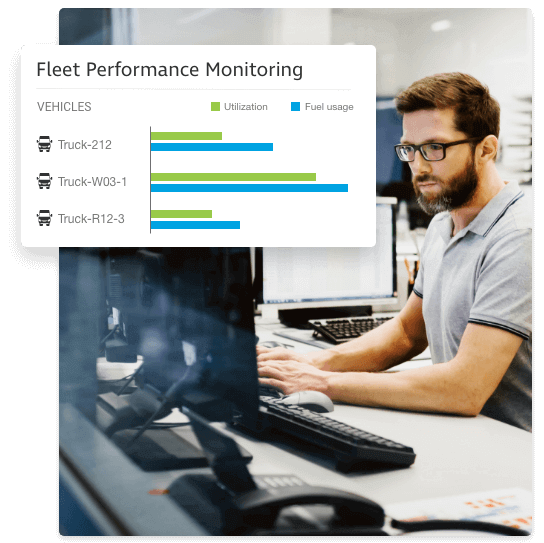Artificial intelligence has been brought into the mainstream, taking the world by storm since ChatGPT launched in November 2022, followed closely by Google Bard a few months later. Since then, there has been a flurry of many others that have been created to complete specific tasks. These generative AI platforms can do everything from write a song, create art, help with personal finances, or plan a holiday – but the reality is, AI has been with us for a long time.
Those song recommendations on Spotify? They’re powered by AI and machine learning (ML). Same goes for when Google Maps finds you the optimum route to a destination. Even autocorrect on our mobile phones is a little piece of AI working away to help us get the right spelling (most of the time) in a text message.
Fleet managers are also benefiting from AI. One of the challenges associated with traditional telematics is those systems generate masses of data, which then must be laboriously analysed to extract maximum value.
With an AI-enabled system like Teletrac Navman’s TN360 platform, AI identifies meaningful, actionable information from the reams of data generated by every vehicle in a fleet every moment of the day.
This means better routing, fuel savings, lower insurance rates and better driver behaviour. And better driver behaviour, enabled through coaching available on the TN360 platform and through Teletrac Navman’s AI IQ Cameras, is a virtuous circle.
![]()
The reason it’s a virtuous circle is the smoother a driver operates their vehicle, and the less they engage in close following or harsh braking, then even more fuel is saved, and maintenance costs are minimised. The driver also becomes safer, improving outcomes for fleet performance and other road users.
From data to decisions
Data should be the lifeblood of any fleet operator. In fact, recent research from PwC found highly data-driven organisations are three times more likely to report significant improvements in decision-making. But it’s a message taking time to get through, with the same report discovering 62 per cent of executives still rely more on experience and advice than data when making decisions.
For operators, there are many benefits of using AI to crunch and analyse fleet data. The advantages of data-driven decision making when coupled with AI include the ability to make more confident decisions; becoming more proactive in decision making; and the ability to reduce operational costs.
However, the reality is most organisations don’t have the budget to employ a data scientist to deal with the massive amounts of data their telematics solution generates. With AI, you don’t need an analyst or data scientist, as the machine does the work for you, generating real-world insights benefiting your business in tangible ways.
So, what are the tangible pay-offs of AI enabled telematics? With the data insights the system gives you, you are able to better understand the information at your fingertips, so instead of combing through reports and tables of data to spot patterns in numbers, the system itself is able to do that for you and output the information visually for you to be able to make instant decisions on what is actually happening within your operation. No more guesswork.

Beyond helping the back-office, AI helps drivers operate more safely, with solutions like the IQ Camera or the Smart Dashcam alerting them to risky behaviour, and with modules like scorecards, you can view trends and help to coach your drivers to rectify their performance with actual understanding in their behaviour, and curb trends before they catch on.
In fact, one of our clients, Jarratt Transport Solutions, based in the Port of Brisbane, Queensland, uses the scorecards, offering the top driver a bonus of $500 per month. But as JTS managing director Phil Jarratt notes, that $500 is a drop in the bucket compared to the savings his company makes every month using Teletrac Navman’s fleet management software. He estimates better driving behaviour saves up to 3000 litres of fuel per month, as well as lowering maintenance and wear-and-tear costs on his fleet.
The future of telematics and fleet management is AI driven. We might still be a long way from autonomous trucks taking to the highways, but today’s AI has tangible benefits for fleet operators, drivers, and the road-going public.

